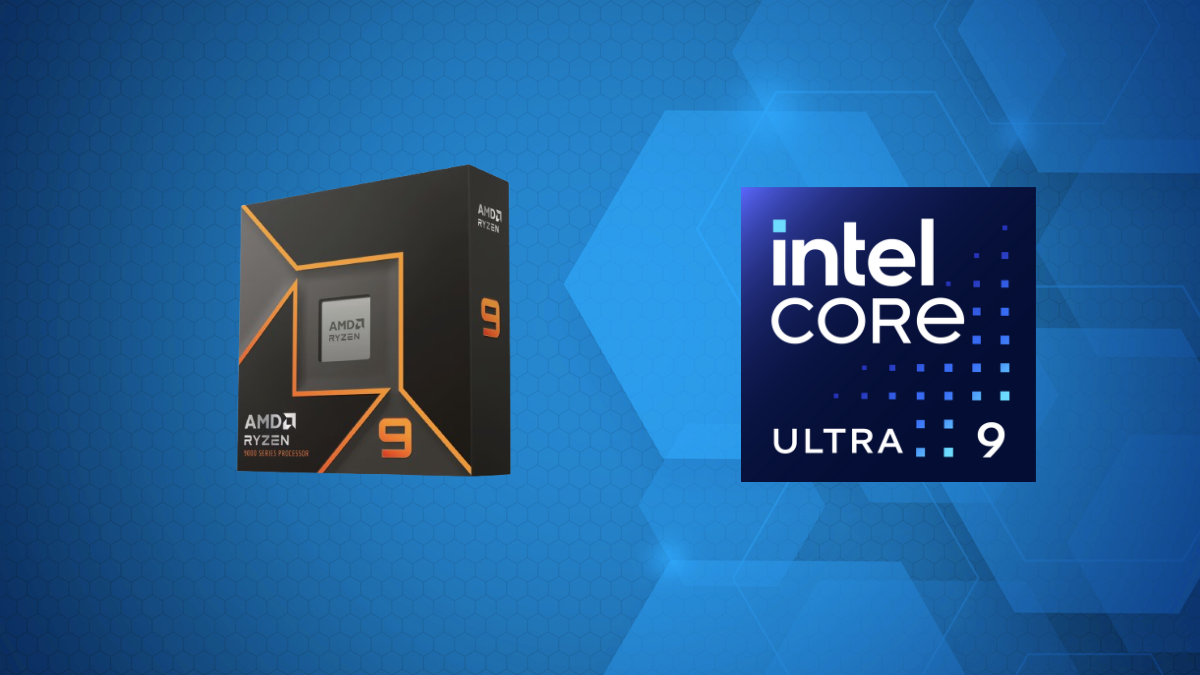In computing, the processor serves as the brain of the system, orchestrating all operations and determining overall performance. Two prominent brands emerge when it comes to choosing a processor: AMD Ryzen 5 and Intel i5. AMD Ryzen processors are often highlighted for their pricing advantages and broader compatibility, making them more affordable due to competitive pricing and the availability of cheaper motherboards. This article delves into a comprehensive comparison of these two processor lines, analysing their performance, features, and price to guide readers in making an informed decision.
Read on to find out more…
Introduction
When choosing a processor for your computer, there are several factors to consider. Two of the more popular options are the AMD Ryzen 5 and the Intel Core i5. Both processors offer impressive performance, but they also have some key differences. In this article, we’ll compare the AMD Ryzen 5 and Intel Core i5 processors, looking at their performance, power consumption, and features.
Performance Comparison: Core Count and Clock Speed
Ryzen 5 processors typically boast higher core counts, ranging from 6 to 16 cores, depending on the generation. This translates to better multitasking capabilities, handling multiple demanding applications simultaneously. Intel’s i5 series usually offers 4 or 6 cores, prioritising single-core performance for gaming and web browsing tasks. However, newer i5 models like the 13500H boast hybrid architectures with additional efficiency CPU cores, enhancing their multitasking abilities.
Clock speed, measured in GHz, indicates the number of cycles a processor can execute per second. Ryzen 5 and i5 processors offer competitive clock speeds, ranging from 3.3 GHz to 5.5 GHz, depending on the model and turbo boost capabilities. While higher clock speeds generally translate to faster performance, it’s not the sole factor. Modern processors also employ intelligent boosting and caching mechanisms, making direct comparisons based solely on clock speed less accurate.
Single-Core vs Multi-Core Performance: Gaming and Content Creation
Single-Core Performance: The Gaming Arena
Single-threaded applications, like many popular games, primarily rely on a CPU’s single-core performance. Traditionally, the i5 series of Intel processors held the edge in this area due to their higher Instructions Per Clock (IPC) – a measure of how many instructions a processor can execute per clock cycle. However, AMD has made significant strides in recent years, closing the gap considerably.
For instance, the Ryzen 5 7600X delivers impressive single-core performance, nearly matching the i5-13600K in some benchmarks. However, in games heavily reliant on single-core performance, the i5 series might still hold a slight advantage, especially at lower resolutions. This makes the i5 a compelling choice for competitive gamers prioritising high frame rates.
Multi-Core Performance: The Content Creation Powerhouse
When considering multi-threaded applications such as video editing, 3D rendering, and scientific computing, the AMD Ryzen CPU excels with its higher core count, delivering better performance for complex tasks. For example, the Ryzen 5 7600X significantly outperforms the Intel CPU i5-13600K in multi-threaded scenarios, making it the preferred choice for content creators and professionals who require efficient multitasking capabilities.
Benchmarking the Battlefield
Benchmarking tools provide objective data to compare processor performance. Reputable sources like UserBenchmark, Cinebench, and PugetBench offer comprehensive benchmarks for both Ryzen 5 and i5 processors.
In single-core benchmarks like Cinebench R23, the i5-13600K edges the Ryzen 5 7600X by a small margin. However, the Ryzen 5 takes a significant lead in multi-core benchmarks, showcasing its prowess in multi-threaded tasks.
The Verdict: It Depends on Your Battlefield
You can confidently choose the CPU that champions your computing journey by carefully evaluating your needs and considering these additional factors.
Features and Technologies
While core count and clock speed are crucial factors in CPU performance, other features and technologies significantly impact your computing experience.
Cache: The Secret Weapon of CPU
Cache acts as the CPU’s temporary memory, storing frequently accessed data for faster retrieval. Larger cache sizes generally translate to faster performance, especially in applications that rely on repetitive tasks.
Ryzen 5: Boasts larger L3 cache sizes, ranging from 32 to 96MB depending on the model. This can provide a significant performance advantage in tasks like web browsing and multitasking.
Intel Core i5: Offers smaller L3 cache sizes, typically ranging from 18MB to 24 MB. This can impact performance in cache-intensive workloads.
However, it’s worth noting that cache architecture also plays a role. AMD’s Ryzen 5 processors utilise a unified cache design, where all cores share the L3 cache, potentially improving efficiency in multi-threaded tasks. Intel’s i5 series employs a segmented cache approach, where each core has its own L3 cache, offering faster access times for single-threaded workloads.
Integrated Graphics: A Free Pass to Casual Gaming
Some i5 processors, particularly non-K models, come equipped with integrated Intel® Iris® Xe graphics or Intel UHD Graphics, allowing basic visuals and even some AAA gaming without a dedicated graphics card. For instance, the Iris® Xe graphics can power games or professional workloads.
Ryzen 5 processors, on the other hand, typically lack integrated graphics, requiring a dedicated graphics card for any visual output. This might seem like a disadvantage, but it allows AMD to focus on core performance and power efficiency, potentially benefiting other aspects of the chip.
These are general recommendations and a general overview providing specific performance may vary depending on the exact processor models and benchmarks used.
GEEKOM mini PC boasts impressive performance packed into an eco-conscious design, but in a budget range. We utilise strong-power-AMD-Ryzen-and-Intel-Core -Core processors for a portable mini PC, optimising energy efficiency as well, keeping your environmental footprint light while tackling demanding tasks—home computing, gaming, office work, and digital creation, for instance.
Use Cases and Recommendations
Choosing the right CPU isn’t just about numbers; it’s about matching the processor to your specific tasks. For gaming, especially at 1080p and 1440p resolutions, a Ryzen 5 processor with strong multi-core performance ensures smooth gameplay and is ideal for high-refresh-rate competitive esports. Now let’s explore the perfect fit for you.
Gaming Glory
AMD Ryzen 5: Ideal for smooth 1080p and 1440p gaming, especially newer models with strong multi-core gaming performance. For competitive esports at high refresh rates, consider i5 options due to their slight single-core edge.
However, nowadays, regardless of who you are a fan of, if you want to experience a better gaming experience, your CPU may also need to be upgraded.
Check out our recommendations for you.
If you’re an Intel fan: Intel Core i7 vs. i9. If you are an AMD fan: Ryzen 7 vs Ryzen 9.
Content Creation Powerhouse
AMD Ryzen 5: Shines in multi-threaded tasks like video editing and 3D rendering due to its higher core count.
Intel Core i5: Can handle content creation, but Ryzen 5 often offers better value and multi-core performance per dollar.
Productivity Prowess
Both Ryzen 5 and i5 processors excel in everyday tasks like web browsing, office work, and light multitasking. Consider power consumption and integrated graphics (i5 only) for specific needs.
Recommendations:
Ryzen 5 5500: Budget-friendly productivity champion.
i5-12450: Offers integrated graphics for basic visuals without a dedicated GPU.
Final Thoughts
Whether you’re looking for a CPU with great performance or various use cases of AMD Ryzen 5 and Intel Core i5, GEEKOM mini PCs perfectly meet your demands. So go green and go big with GEEKOM—power that’s kind to your wallet and the world.





























